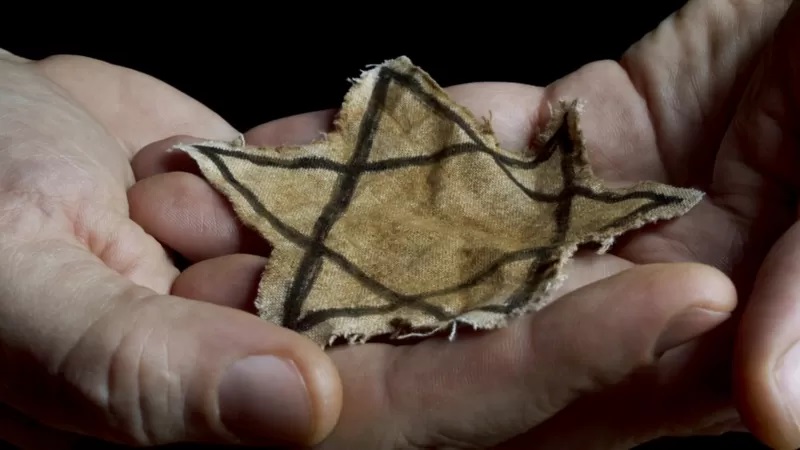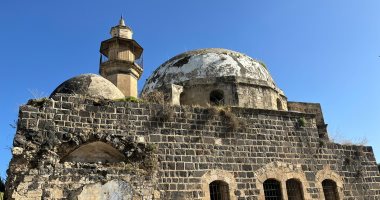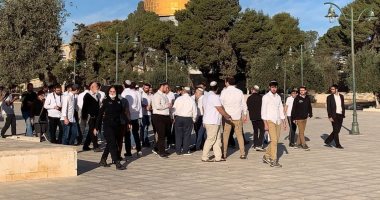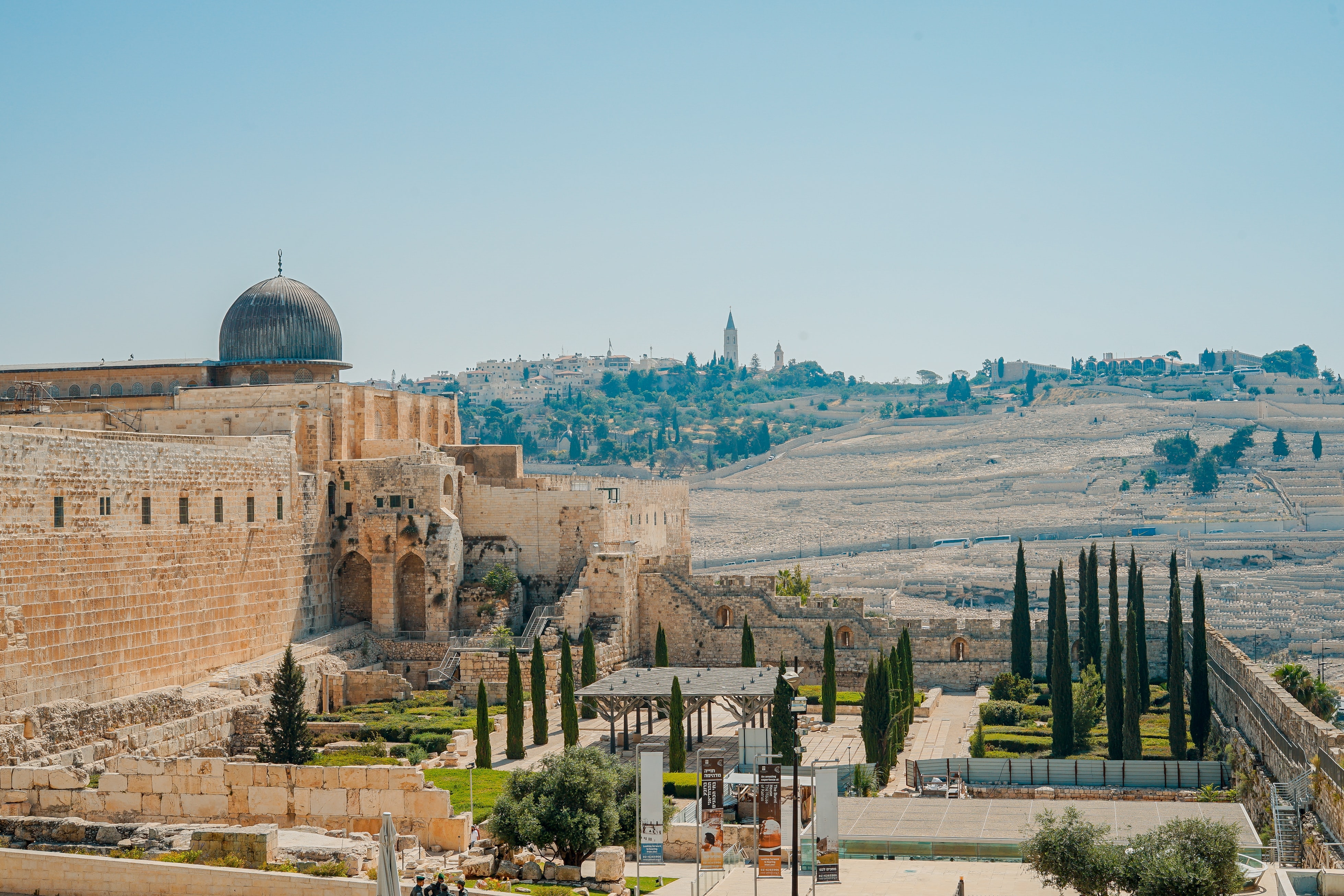
1917
LThe British occupy Palestine in the First World War after their success in expelling the Ottomans. The then British Foreign Secretary Arthur Balfour issued his famous promise that “His Majesty’s Government view with favor the establishment in Palestine of a national home for the Jewish people, and will use their best endeavors to facilitate the achievement of this object, it being clearly understood that nothing shall be done which would detract from the The civil and religious rights enjoyed by resident non-Jewish communities in Palestine, nor the rights or political status enjoyed by Jews in any other country.”

1918
The emergence of the first Palestinian national organizations, including the Arab Forum and the Arab Club.

1920
The San Remo Conference of the victorious powers in the First World War decides to grant Britain the Mandate for Palestine “to prepare it for self-determination”. Demonstrations erupt in Jerusalem in protest against the Balfour Declaration and to emphasize the Palestinian-Arab identity of Palestine.

1921
Britain appoints Muhammad Amin al-Husseini as Mufti of Jerusalem and leader of the Arabs of Palestine. Sheikh Amin incites the Palestinians to resist any further concessions granted to the Jews.

1922
A Palestinian delegation rejects the British proposal to form a legislative council, saying that it is unacceptable to include the provisions of the Balfour Declaration in the proposed draft constitution for the country.

1929
Riots in Jerusalem and Hebron kill nearly 200 Jews. British forces kill 116 Palestinians while trying to quell riots in Jerusalem.

1930
A British royal commission and a government document recommend limiting Jewish immigration to Palestine.

From 1930 to 1935
The Black Palm organization led by Sheikh Izz al-Din al-Qassam is waging an armed campaign against the Jewish presence and the British Mandate.

1935
The Palestinian leadership accepts the proposal put forward by the British High Commissioner to form a legislative council, but the British House of Commons in London rejects the proposal the following year.

From 1936 to 1939
The outbreak of a Palestinian revolution that began with a general strike in Jaffa. The British Mandate Authority imposes martial law and dissolves the Palestinian High Commission headed by Mufti Amin al-Husseini. More than 5,000 Palestinians were killed and 15,000 wounded at the hands of British forces. Amin al-Husseini flees to Syria (at that time under French mandate) to avoid arrest.

1947
The United Nations recommends dividing Palestine into two Arab and Jewish states and subjecting the city of Jerusalem and its surrounding areas to international control, after Britain announced the end of its mandate. And the Arab Higher Committee rejects the partition decision.

1948
Israel declares its independence after the end of the British Mandate. Arab armies fail to defeat Israel after the British withdrawal. Jordan occupies the West Bank and East Jerusalem, Egypt occupies the Gaza Strip, while Israel controls the rest of Palestine, including West Jerusalem. At least three quarters of a million Palestinians are expelled or flee their homes. Establishment of the United Nations Relief and Works Agency for Palestine Refugees (UNRWA) in order to respond to the health and educational needs of the refugees.

From 1949 to the fifties
The Palestinian guerrillas launch attacks on Israel from their bases in Egypt and the Gaza Strip, with Egyptian encouragement. Attacks escalate after nationalist officers succeeded in overthrowing the monarchy in Egypt in 1952.

From 1956 to 1957
Israel colluded with Britain and France to invade Egypt after the nationalization of the Suez Canal, in part to stop the attacks carried out by the fedayeen. Bringing in an international force in the Sinai and Gaza succeeded to a large extent in limiting the guerrilla attacks on Israel.

1959
Yasser Arafat establishes the armed Fatah movement in Egypt to attack targets in Israel.

1964
The Arab League announces the formation of the Palestine Liberation Organization and the Palestine Liberation Army under the leadership of Ahmed Al-Shugairi.

1967
The Six-Day War of June, in which Israel managed to occupy East Jerusalem, the West Bank, the Gaza Strip, the Syrian Golan Heights, and the Egyptian Sinai Peninsula. The establishment of Jewish settlements in all of these occupied territories in the following years with the approval of the Israeli government.

1969
Yasser Arafat takes over the leadership of the Palestine Liberation Organization after clashes erupted between Palestinian militants and Israeli forces in Jordan in 1968, and confirms the organization’s independence from Egyptian control.

1970
The increase in the influence of the Palestine Liberation Organization in Jordan leads to clashes with the Jordanian forces in “Black September”, which led to the movement of the Palestine Liberation Organization to southern Lebanon.
The seventies and eighties – the Palestine Liberation Organization and other Palestinian factions adopt tactics of hijacking planes and launching attacks on Israeli soldiers, civilians and officials inside and outside Israel to promote the Palestinian cause.

1972
The “Black September” organization kidnapped the Israeli Olympic team participating in the Munich Games. Two Israeli athletes were killed during the operation, and 9 others were killed when German forces tried to free them. Israel launches a series of revenge assassinations, including the assassination of Palestinian leaders in Beirut.

1973
Israel changes PLO bases in Beirut and southern Lebanon before and during the October War

1974
(April-May) The Popular Front for the Liberation of Palestine and the Democratic Front for the Liberation of Palestine-General Command launch attacks on targets in northern Israel, killing 43 civilians, including many children, in a residential neighborhood in Kiryat Shmona and a school in Ma’alot.

1974
(April-May) The Popular Front for the Liberation of Palestine and the Democratic Front for the Liberation of Palestine-General Command launch attacks on targets in northern Israel, killing 43 civilians, including many children, in a residential neighborhood in Kiryat Shmona and a school in Ma’alot.
(June) After the October war, the Palestine Liberation Organization adopts a 10-point program that allows for compromise with Israel with the aim of restoring Palestinian control over all of historic Palestine. A number of extremist factions split from the Palestine Liberation Organization and form the “rejection front” and escalate their attacks on Israeli soldiers and civilians.
(October) The Arab League recognizes the Palestine Liberation Organization as the “sole and legitimate representative of the Palestinian people”, and accepts it as a full member of the League.
(November) Yasser Arafat becomes the first leader without a state to address the United Nations General Assembly.

1975
The Popular Front for the Liberation of Palestine (which was affiliated with the rejectionist camp), in cooperation with a leftist German group, hijacked a French passenger plane that was heading from Israel to France and diverted to Entebbe airport in Uganda. And Israeli special forces succeeded in liberating most of the passengers and crew, and killing the hijackers.

1977
(May) Israel’s right-wing Likud party wins a surprise general election victory and encourages settlement activity in the West Bank and Gaza Strip.

1978
(March) An attack by Palestinian gunmen kills 38 Israelis on a coastal road in Israel. Israel launches its first major attack in southern Lebanon and forces the Palestine Liberation Organization and other Palestinian factions to leave the area.
(September) Israel pledges to expand Palestinian autonomy in the West Bank and Gaza Strip, stipulated in the Camp David peace accords between it and Egypt.

1982
(June) Israel invades Lebanon again to expel the leadership of the Palestine Liberation Organization from Beirut, following the assassination attempt in which a Palestinian faction targeted the Israeli ambassador in London.
(September) Israel’s Lebanese allies perpetrate the Sabra and Shatila massacre in Beirut that claimed hundreds of Palestinian refugees. The leadership of the Palestine Liberation Organization moves to Tunisia after Israel’s siege and storming of Beirut, and the leadership of the Palestine Liberation Organization remains there until its transfer to Gaza in 1994.

1985
(October) Israeli warplanes raid the headquarters of the Palestine Liberation Organization in Tunis, after an attack on a cruise ship carried out by the Palestine Liberation Front affiliated with the Palestine Liberation Organization, which killed 3 Israeli tourists. The militants of the aforementioned front were demanding the release of 50 Palestinians who were languishing in Israeli prisons.

1987
(December) The outbreak of the first Palestinian Intifada in the Occupied Palestinian Territories. The Muslim Brotherhood in the Gaza Strip establishes the Islamic Resistance Movement (Hamas), which adopts the method of violence against Israel.

1988
Jordan officially relinquishes its claim to the West Bank to the Palestine Liberation Organization. The Palestinian National Council announces in a meeting in Algeria the establishment of the State of Palestine.

1990
The Palestine Liberation Organization supports Iraq’s move to annex Kuwait. Kuwait cuts its relations with the organization and expels about 400,000 Palestinians residing there.

1991
(October) Palestinian and Israeli representatives meet face-to-face for the first time since 1949 in Madrid under US-Soviet auspices.

1992
Yitzhak Rabin’s Israeli labor government pledges to halt settlement activity in the occupied Palestinian territories, and begins secret negotiations with the Palestine Liberation Organization.
(May-July) Israel withdraws from most of the Gaza Strip and from Jericho in the occupied West Bank. Yasser Arafat and the officials of the Palestine Liberation Organization return to the land of Palestine from Tunisia and establish the Palestinian National Authority.
(December) The Nobel Peace Prize is awarded jointly to Yasser Arafat, Yitzhak Rabin, and then Israeli Foreign Minister Shimon Peres.

1993
(September) Yitzhak Rabin and Yasser Arafat sign the Oslo Declaration, which provides for the establishment of Palestinian autonomy and the end of the first intifada. But the violence carried out by the factions that reject Oslo continues.

1994
(February) Jewish extremist Baruch Goldstein of the Kach movement kills 29 Palestinian worshipers at the Ibrahimi Mosque in Hebron in the occupied West Bank.

1995
Reaching an interim agreement between the Palestinian National Authority and Israel laying the foundations for transferring more powers and territories to the Authority. That agreement became the basis for the 1997 Hebron Charter, the 1998 Wye River Memorandum, and the 2003 international “road map”.

2000 and 2001
The collapse of negotiations between Israeli Prime Minister Ehud Barak and Palestinian National Authority Chairman Yasser Arafat as a result of differences over the timing and extent of the proposed Israeli withdrawal from the West Bank. Protests erupt in the occupied territories following the visit of Israeli Defense Minister Ariel Sharon to the courtyard of Al-Aqsa Mosque, which quickly developed into a second Palestinian intifada, dubbed the “Al-Aqsa Intifada”.
(December) Israeli forces surround Ramallah after a series of attacks by Palestinians inside Israel leaves Yasser Arafat a prisoner inside his compound.

2000 and 2001
The collapse of negotiations between Israeli Prime Minister Ehud Barak and Palestinian National Authority Chairman Yasser Arafat as a result of differences over the timing and extent of the proposed Israeli withdrawal from the West Bank. Protests erupt in the occupied territories following the visit of Israeli Defense Minister Ariel Sharon to the courtyard of Al-Aqsa Mosque, which quickly developed into a second Palestinian intifada, dubbed the “Al-Aqsa Intifada”.

2002
(March) The Israeli army launches a military operation (dubbed Defensive Shield) in the occupied West Bank, and begins constructing a barrier to prevent Palestinian militants from entering Israel. However, the route of the wall has become controversial, especially since it did not follow the 1967 ceasefire line and in many cases annexed Palestinian lands to Israel.

2003
(March) Yasser Arafat appoints Mahmoud Abbas as prime minister of the Palestinian National Authority and assigns him to lead the negotiation process with Israel and the United States, which refuse to deal with Arafat.
(May) Israeli Prime Minister Ariel Sharon says the occupation of Palestinian lands cannot continue indefinitely.
(June) The Arab League, at a meeting in Cairo, expresses its acceptance of the “road map” proposed by the United Nations, Russia, the United States and the European Union and accepted by the Palestinian National Authority and Israel, which calls for the establishment of an independent Palestinian state and a settlement freeze in the West Bank.
(September) Mahmoud Abbas resigns as Prime Minister as a result of what he described as “Israeli and American intransigence and Palestinian opposition to his government.” And the appointment of Ahmed Qurei as his successor.

2004
(March) Israeli forces assassinate Ahmed Yassin, the founder and leader of Hamas, in Gaza, and the following month, his successor, Abdulaziz Al-Rantisi, is assassinated.
(July) International Court of Justice issues non-binding advisory ruling saying Israel’s separation wall violates international law and must be removed.
(November) Yasser Arafat dies in a French hospital where he was transferred the previous October for treatment.

2005
(January) Mahmoud Abbas is elected to succeed Arafat as President of the Palestinian National Authority.
(September) Israel withdraws its forces and settlers from the entire Gaza Strip, but maintains control of the strip’s airspace, ports and border crossings.

2006
(March) The Islamic resistance movement Hamas wins the January Palestinian legislative elections, and the movement’s leader, Ismail Haniyeh, forms a new Palestinian government. The outbreak of a power struggle between Hamas and Fatah. The United States and the European Union freeze the aid it provides to the Palestinians, and Israel suspends the transfer of tax revenues to the Palestinian National Authority because of Hamas’ refusal to recognize Israel’s existence, its refusal to renounce violence and its refusal to abide by previous peace agreements.
(June) Hamas gunmen in Gaza capture Israeli soldier Gilad Shalit near a crossing and hold him hostage for nearly five years, demanding the release of Palestinian prisoners. Major confrontations erupt between Hamas militants and the Israeli forces in the Gaza Strip, and Israel imposes restrictions on the Strip.
(September) Clashes erupt in the Gaza Strip between supporters of Fatah on the one hand and supporters of Hamas on the other. Arab countries and Palestinian factions seek to mediate between the two sides in order to spare the Palestinians a civil war.

2007
(March) Fatah and Hamas form a national unity government to end the sporadic clashes that have been in the Gaza Strip for months.
(June) The collapse of the national unity government. Hamas expels Fatah movement from the Gaza Strip and strengthens its grip on the Strip. Israel tightens its siege on Gaza after the escalation of rocket fire from the Strip at Israeli targets. Egypt closes its borders with the sector. Mahmoud Abbas appoints Salam Fayyad as prime minister, but Hamas does not recognize him. The emergence of two competing governments in the Gaza Strip and the West Bank, and the United States and the European Union resume aid to Fayyad’s government.
(November) The “two-state solution” as a basis for future negotiations between the Palestinian National Authority and Israel was adopted for the first time at a conference held in Annapolis in the United States.

2007
(March) Fatah and Hamas form a national unity government to end the sporadic clashes that have been in the Gaza Strip for months.
(June) The collapse of the national unity government. Hamas expels Fatah movement from the Gaza Strip and strengthens its grip on the Strip. Israel tightens its siege on Gaza after the escalation of rocket fire from the Strip at Israeli targets. Egypt closes its borders with the sector. Mahmoud Abbas appoints Salam Fayyad as prime minister, but Hamas does not recognize him. The emergence of two competing governments in the Gaza Strip and the West Bank, and the United States and the European Union resume aid to Fayyad’s government.
(November) The “two-state solution” as a basis for future negotiations between the Palestinian National Authority and Israel was adopted for the first time at a conference held in Annapolis in the United States.

2008
(March) Reconciliation efforts between Fatah and Hamas kick off in Yemen, but the next round of talks in Cairo is hampered by Hamas’ objection to Fatah’s arrest of its activists in the West Bank.
(November) Israel launches an attack on Gaza, which Hamas considers a violation of the cease-fire agreement and responds by firing rockets at Israel.
(December) Israel launches a month-long military operation on the Gaza Strip called “Cast Lead” and aims to prevent Hamas and other Palestinian factions from firing rockets at Israel.

2010
(February) Reconciliation negotiations between Fatah and Hamas resume. And the resumption of direct peace negotiations between Israel and the Palestinian National Authority, but these negotiations collapse as a result of the dispute over the settlements.
(May) 9 Turkish activists killed when Israeli forces intercepted ships on board trying to break the siege imposed on the Gaza Strip.

2011
(April and May) Fatah and Hamas agree in Cairo to re-form a national unity government and hold new elections, but this agreement has not found its way to practical implementation.
The Palestinian National Authority is embarking on a campaign aimed at obtaining the membership of the State of Palestine in the United Nations, in order to draw attention to the collapse of negotiations with Israel. The attempt fails, but the International Organization for Education, Culture and Science (UNESCO) accepts Palestine’s membership in it in October).

2012
(May) After preliminary negotiations in Qatar, Hamas and Fatah sign an agreement in Cairo pledging to continue peaceful resistance to the Israeli occupation in pursuit of the goal of establishing an independent Palestinian state within the 1967 borders.
(October) Local elections are held in the West Bank, in which Fatah receives only two-fifths of the seats. The turnout in the elections was 55 percent. Lists headed by candidates from Fatah won only 4 out of 11 major Palestinian cities, while independents and leftists won five of these cities. As for Hamas, it boycotted the elections and did not allow them to take place in the Gaza Strip.
(November) The United Nations upgrades Palestine’s representation to a “non-member observer state” in the international organization, allowing it to participate in the debates of the General Assembly and making it easier for it to join the various UN agencies.
(December) Fatah allows Hamas to hold a demonstration in the West Bank to celebrate the upgrading of Palestine’s representation at the United Nations, and Hamas responds by allowing Fatah to hold a similar demonstration in Gaza the following month.

2013
(April) Palestinian National Authority Prime Minister Salam Fayyad resigns after a long-running dispute with Palestinian Authority President Mahmoud Abbas. Rami Hamdallah appointed prime minister in May.
US Secretary of State John Kerry is mediating the start of a series of meetings between Palestinians and Israelis aimed at reaching a framework peace agreement by April 2014, but Palestinian officials say Israel’s insistence on continuing settlements in occupied East Jerusalem undermines any progress. Israel accuses the Palestinians of inciting violence.
(July) The fall of the government of President Mohamed Morsi in Egypt ends Palestinian hopes for lifting the siege on the Gaza Strip. Egypt suspends its mediation in the reconciliation negotiations between Fatah and Hamas.
(December) Israel, the Palestinian National Authority and Jordan sign a water agreement aimed at addressing the drying up of the Dead Sea by laying pipelines to transport water from a desalination plant on the Red Sea.

2014
(March) Egypt bans Hamas activities and confiscates its assets, alleging its ties to the banned Egyptian Muslim Brotherhood.
(April) Fatah and Hamas agree to form a national unity government to take power in June, but Fatah complains that the Hamas government is still in power in the Gaza Strip.
(June) Israel responds to the kidnapping and killing of 3 Jewish youths in the occupied West Bank by arresting several Hamas activists. Hamas activists are responding to this and the killing of a Palestinian youth by Jewish extremists by firing rockets from Gaza into Israel.
(July-August) Israel responds to attacks by militants from Gaza with a ground and air campaign aimed at eliminating rocket launchers and tunnels. Clashes between the two sides end with an Egyptian-brokered ceasefire agreement in August.
(December) Palestinian Minister of State Ziad Abu Ein is killed in a clash with Israeli forces in the West Bank.

2015
(May) The Vatican officially announces that it will recognize the state of Palestine.

Find Us Here